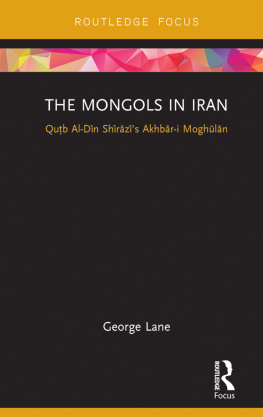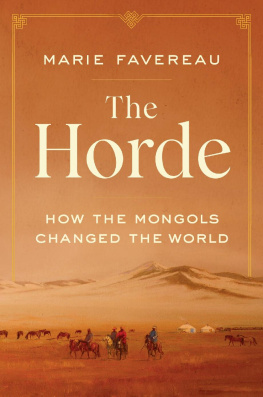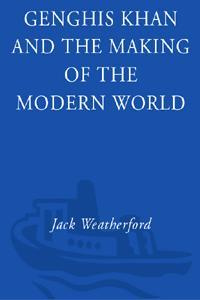
THE SECRET
HISTORY OF THE
MONGOLS
THE LIFE AND TIMES OF
CHINGGIS KHAN
TRANSLATED, ANNOTATED,
AND WITH AN INTRODUCTION BY
Urgunge Onon

THIS BOOK IS DEDICATED TO THE MONGOLS
OF ALL TIMES, PAST, PRESENT AND FUTURE
First Published in 2001
by RoutledgeCurzon Press
2 Park Square, Milton Park, Abingdon,
Oxon, OX14 4RN
This edition published in the Taylor & Francis e-Library, 2005.
"To purchase your own copy of this or any of Taylor & Francis or Routledges
collection of thousands of eBooks please go to
www.eBookstore.tandf.co.uk ."
2001 Urgunge Onon
All rights reserved. No part of this book may be reprinted or reproduced or utilised in any form or by any electronic, mechanical, or other means, now known or hereafter invented, including photocopying and recording, or in any information storage or retrieval system, without permission in writing from the publishers.
British Library Cataloguing in Publication Data
A catalogue record of this book is available from the British Library
Library of Congress Cataloguing in Publication Data
A catalogue record for this book has been requested
ISBN 0-203-98876-0 Master e-book ISBN
ISBN 0-7007-1335-2 (Print Edition)
ISBN 978-1-135-79556-6 (ePub)

CONTENTS

INTRODUCTION
The East has known only three great men. Sakyamuni was born a prince around 500 BC in what is now Nepal. Distressed by human suffering, he left his family, achieved enlightenment through meditation, and became the Buddha. According to his teachings, life is painful, the origin of pain is desire, the end of pain can be achieved by ending desire, and the way to this is through right living. This philosophy of cause and effect spread northwards into Tibet, where it absorbed the popular Bon religion and changed greatly in nature. The resulting synthesis, known as Lamaism, can be criticised as passive and fatalistic. Lamaism became popular among the Mongols during the reign of Qubilai Qahan (12151294).
Confucius was born at around the same time as the Buddha, into Chinas lower aristocracy. Confucius wanted to restore China to a golden age of peace. He also said that the universe belongs to the public, but although he emphasised the need for ethical conduct, he believed implicitly in a society shaped by the hereditary right of aristocrats. He helped to endow Chinese with the idea that China lay at the centre of the universe; and he persuaded ordinary Chinese to confine their loyalties to their family
and the emperor. Confucianism spread to the countries of the East that practised settled agriculture, but not to nomadic countries like Mongolia.
Temjin, the personal name of Chinggis Qahan, was born on the sixteenth day of the fourth lunar month in the year 1162 into the family of a tribal leader. Some historians, for example the Persian Rashid al-Din (1247 1318), who was of Jewish origin, say that Chinggis was born earlier, in 1155, the Year of the Pig. Neither Jews nor Muslims (nor, for that matter, Mongols) like pigs, and many Persians deeply hated the Mongols, who set up a dynasty (the Il-Qahan, which ran from 1265 to 1335), in their country. So it was probably with some satisfaction that Rashid al-Din determined 1155 as the year of birth of the Mongol world-conqueror. Chinggis did, however, die in a Pig Year, 1227.
Mongol society developed in three stages. It rose on the basis of a hunting economy in the forest regions to the north of the Mongol heartland. During this period was created the title mergen , meaning a good hunter or an intelligent person. When the Mongols emerged from the forests, they created a new title, baatur , or hero, which shows that the distinct Mongol tribes of the day were at war with one another and were probably engaged in a nomadic way of life. Around the eighth century, two new titles appeared: noyan , meaning lord, and qan , usually transcribed in English as khan.
In the sixth century, Turkic nomadic tribes, later known as Orkhon Turkish, moved into the territory of present-day Mongolia and ruled the area until the middle of the seventh century, when they were replaced by the Uighurs (who stayed until the eighth and ninth centuries). By the tenth century, the Liao Dynasty (also known as Kitan) was established in the eastern part of the region, present-day Manchuria. The Kitan were in power from 916 to 1119, when they, in turn, were replaced by another nomadic people, the Jin Dynasty, also known as Altan Ulus (1115 1234).
The Mongols were a small nomadic tribe in the area of Ergn and was one of the many tribal peoples shifting about nomadically during this period. The people of the felt walled tents were the Tatars, the Onggirads, the Kereyids, the Naimans, the Tayichiuds, and the Merkids. All these groups spoke a language akin to that of the Mongols, but they were only included in the category of Mongols after they had been conquered by, or pledged alliance to, the Mongol tribe. Chinggis Qahans ancestors belonged to the Kiyad group of the Borjigin clan of the Mongol tribe.
Tribal feuds and struggles for power continued for many generations among the tribes, while foreign enemies such as the Liao Dynasty and the Jin ruled them from the east. The Tangqut nation (10021227) to the south and the Uighurs to the west were awaiting their turn to attack.
By the twelfth century, however, the nations surrounding the area of present-day Mongolia were growing weaker; this was especially so of the Jin Dynasty, which was at war with the Song Dynasty of southern China. At the same time the Mongols, along with the other nomadic tribes, were becoming stronger economically through their vast herds of livestock. To enjoy this new prosperity, they sought to put an end to tribal warfare and to live in peace with one another, and at the same time to present a united front to external enemies. Chinggis Qahan, born in 1162, fulfilled a need for his people. The many tribes were strong, but lacked a leader to weld them into one.
Next page








![Timothy May - The Mongol Empire [2 Volumes]: A Historical Encyclopedia](/uploads/posts/book/143064/thumbs/timothy-may-the-mongol-empire-2-volumes-a.jpg)






